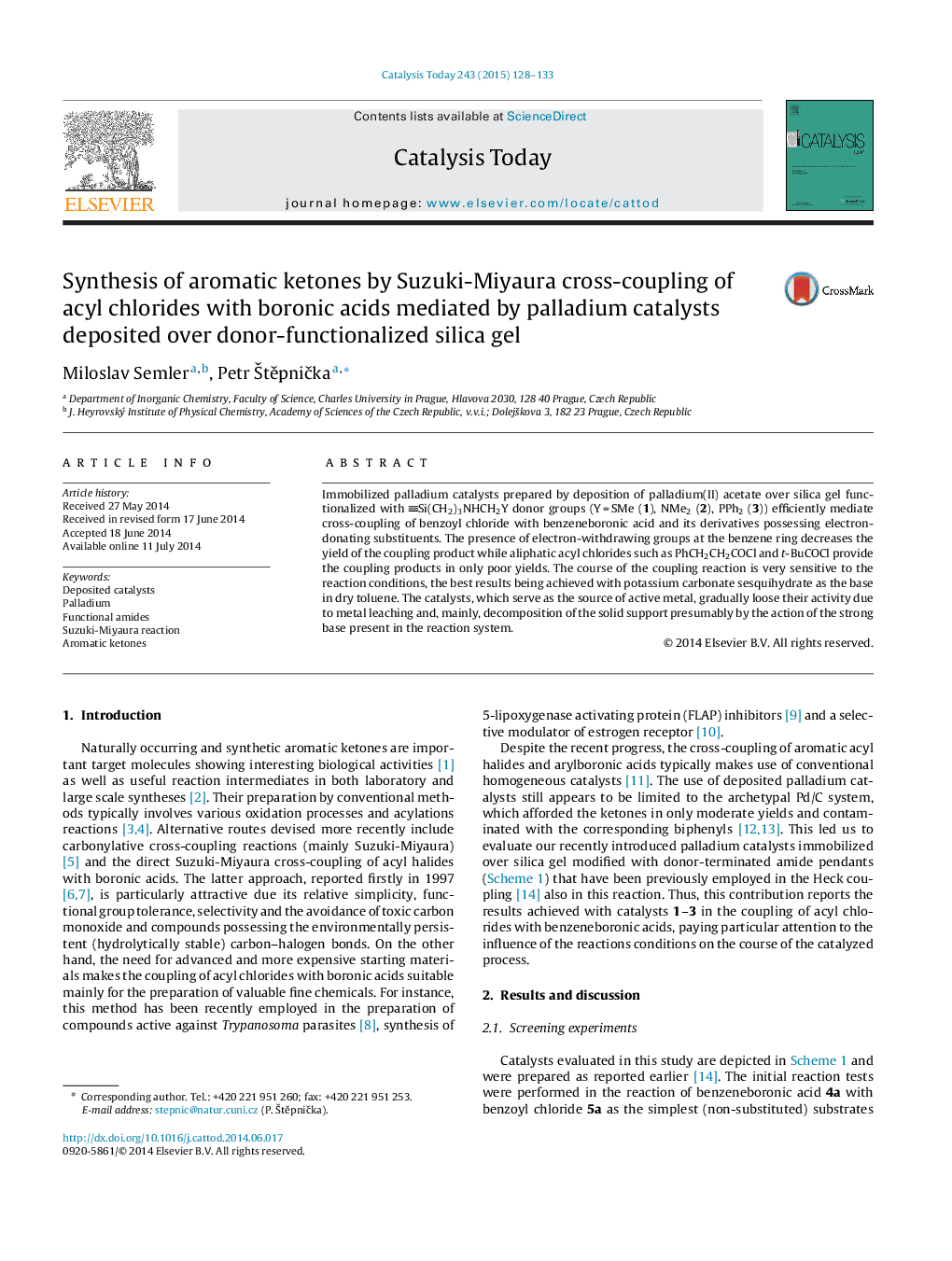| Article ID | Journal | Published Year | Pages | File Type |
|---|---|---|---|---|
| 54365 | Catalysis Today | 2015 | 6 Pages |
•Deposited Pd catalysts were used in cross-coupling of boronic acids with acyl chlorides.•The reaction proceeds well with aromatic substrates.•Solvent and base strongly affect the course of the reaction.•The catalyst serves as a source of active metal species.
Immobilized palladium catalysts prepared by deposition of palladium(II) acetate over silica gel functionalized with Si(CH2)3NHCH2Y donor groups (Y = SMe (1), NMe2 (2), PPh2 (3)) efficiently mediate cross-coupling of benzoyl chloride with benzeneboronic acid and its derivatives possessing electron-donating substituents. The presence of electron-withdrawing groups at the benzene ring decreases the yield of the coupling product while aliphatic acyl chlorides such as PhCH2CH2COCl and t-BuCOCl provide the coupling products in only poor yields. The course of the coupling reaction is very sensitive to the reaction conditions, the best results being achieved with potassium carbonate sesquihydrate as the base in dry toluene. The catalysts, which serve as the source of active metal, gradually loose their activity due to metal leaching and, mainly, decomposition of the solid support presumably by the action of the strong base present in the reaction system.
Graphical abstractFigure optionsDownload full-size imageDownload high-quality image (97 K)Download as PowerPoint slide
